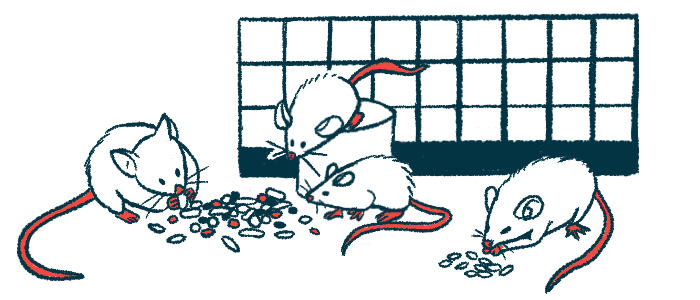Immune protein activator honokiol restores mitochondria in FA cells
Rodent, cell studies show honokiol as 'possible strategic therapy'

A small molecule called honokiol was seen to restore the function of mitochondria, the small structures producing energy in cells, and to reduce the number of harmful oxygen-containing molecules in a study that used a cell model of Friedreich’s ataxia (FA).
Honokiol, like resveratrol, is a naturally occurring compound being tested in Phase 2 clinical studies in FA. It works by activating a sirtuin protein called SirT3.
In their work, a team of researchers from Spain found that treatment with honokiol increased energy production and lowered the amount of the harmful molecules.
According to the researchers, the results of this study suggest the molecule’s use “as a possible strategic therapy” for the inherited, progressive disease.
The study, “Mitochondrial impairment, decreased sirtuin activity and protein acetylation in dorsal root ganglia in Friedreich Ataxia models,” was published in the journal Cellular and Molecular Life Sciences.
Researchers focus on frataxin and nerve cells
FA is caused by a shortage of frataxin, a protein that helps control how much iron cells store. Frataxin deficiency disrupts the iron balance inside cells and increases the production of harmful oxygen-containing molecules known as reactive oxygen species.
While a lack of frataxin can stop mitochondrial proteins from working, reactive oxygen species cause a pore in mitochondria to open. As a result, nerve and muscle cells are left without an energy supply and become sensitive to damage, leading to FA symptoms such as difficulty walking and loss of balance.
Dorsal root ganglia (DRG), clusters of nerve cells that are activated by sensory input, seem to be particularly sensitive to early damage from oxidative stress, which occurs when reactive oxygen species outnumber helpful antioxidants.
To understand how a shortage of frataxin affects mitochondria in DRG neurons, the researchers watched for changes in lab-grown DRG neurons from rats with frataxin levels as low as 30% of normal.
A shortage of frataxin resulted in less active electron transport chains, series of protein complexes in which mitochondria produce energy in a form cells can use to get their molecular machinery to work. Protein levels of complexes I and II were cut by about half.
The researchers saw similar results in mice carrying a disease-causing mutation in the gene coding for frataxin. FA mice had as much as 8% of the level of frataxin of wild-type, or control, mice. They also had lower levels of complexes I and II, and some of their mitochondria lacked characteristic folds or were condensed.
The ratio between NAD and NADH, two forms of a molecule on which the production of energy depends, was off balance. There was less NAD relative to NADH, indicating that less energy was being produced, according to researchers.
Oxidative stress seen to particularly affect mitochondria
SirT3 is an enzyme that depends on NAD to work.
“Since frataxin is a mitochondrial protein and we were especially interested in mitochondria, we also determined levels of mitochondrial SirT3 in DRG,” the researchers wrote.
The levels of SirT3 were lower in DRG neurons from FA than in wild-type mice. Mitochondrial superoxide dismutase (SOD2), an enzyme that helps to control the levels of reactive oxygen species in cells, is a well-known target of SirT3.
A chemical reaction called acetylation inactivates SOD2, which “might result in oxidative stress,” the researchers wrote. SOD2 acetylation was higher in DRG neurons from FA mice than in wild-type mice, suggesting that the enzyme may be inactive.
“We have provided evidence that the decrease in SirT3, a key regulator of mitochondrial energetic and antioxidant metabolism, resulted in oxidative stress due to increased SOD2 acetylation, which inactivates the enzyme,” the investigators wrote.
Lab-grown DRG neurons with low levels of frataxin had up to twice as much iron as their normal counterparts. They also had higher levels of reactive oxygen species in their mitochondria.
“All these changes contribute to oxidative stress that affects the whole cell, but in particular the mitochondria in the sensory neurons,” the researchers wrote.
Honokiol, a SirT3 activator thought to have antioxidant activity, was added to the lab-grown DRG neurons lacking frataxin. Treatment with honokiol resulted in a reduction of SOD2 acetylation to a level close to that of normal DRG neurons.
Treatment with honokiol also reduced the number of reactive oxygen species in mitochondria and increased the production of energy, as demonstrated by more energy required to support basic body functions and the maximum energy that the electron respiratory chain can produce.
“In general, the two models used in this study show similar results and help us to understand the molecular effects [mainly in the mitochondria] of frataxin reduction in DRG sensory neurons,” the researchers wrote.








